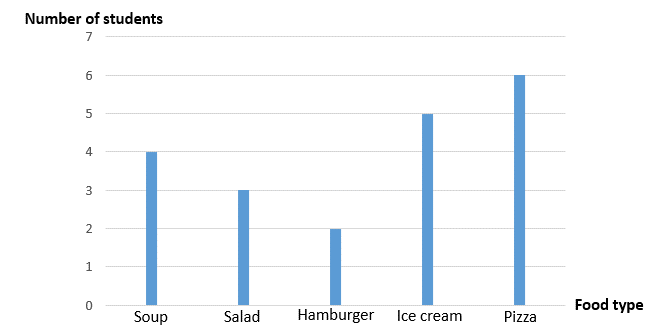The NWEA MAP Growth Test for Kindergarten and 1st Grade focuses on early reading, math, and language skills. I’m Ariav Schlesinger, a MAP Growth specialist, sharing clear and practical guidance for parents.
This page includes:
- Free K–1 sample questions
- Simple skill explanations in Math and Reading
- Audio-narrated items for early readers
- Helpful at-home tips
- A guide to early RIT scores
Sample Math Questions | Sample Reading Questions | Scores Explained | How to Prep | Our PrepPack | FAQs
MAP Growth in the Early Years
Why the MAP Growth Test Matters in Kindergarten and 1st Grade
If your child is in kindergarten or 1st Grade they will be taking the MAP Growth K–2 Test. This test focuses on early reading and math skills, which are the building blocks of lifelong learning. Each question is read aloud, allowing your child to focus on understanding rather than decoding text. This gives teachers and parents a clear picture of what your child knows and what they’re ready to learn next.
Sample Math Questions
MAP Growth K-1st grade math questions are designed to measure early numeracy, the foundation of all future math learning. Your child will explore:
- Number sense: counting, place value, comparing numbers, and representing numbers.
- Computation and problem solving: addition, subtraction, basic operations, and story problems.
- Measurement and geometry: shapes, sizes, units, money, and spatial reasoning.
- Early data and algebraic thinking: simple graphs, patterns, and relationships.
Sample Reading Questions
In Kindergarten, the MAP Growth reading section (called Early Literacy) focuses on the building blocks of reading readiness. Your child will practice:
- Phonological awareness: rhyme, syllables, sound blending and manipulation.
- Phonics and decoding: letter sounds, vowel patterns, sight words, and multisyllable strategies.
- Concepts of print: how books and text work (left to right, title, words).
- Word meaning and structure: vocabulary, affixes, compound words, and context clues.
- Comprehension and writing basics: understanding stories and informational text; simple capitalization, punctuation, and spelling.
Ready to Build Your Child’s Learning Confidence?
Help your kindergartener or 1st grader shine on the MAP Growth test with our K–1st Grade PrepPack. Strengthen early math and reading skills through fun, narrated practice designed by teachers. Start with free sample questions or unlock the full pack for complete preparation.
Understanding MAP Scores
MAP Growth uses the RIT scale (Rasch Unit) to measure your child’s progress.
This score shows your child’s learning level and not a grade or pass/fail result.
Typical Kindergarten RIT scores range from 140–170, depending on the testing season (fall, winter, or spring).
Your child’s MAP report includes:
RIT score: their current learning level
Percentile rank: how they compare to national peers
Lexile range: helps you pick books at just the right reading level
These MAP scores help teachers tailor instruction and help parents celebrate growth over time.
How to Prepare at Home
At this age, familiarity and confidence matter more than memorization. Short, positive sessions work best.
Here’s how to get started:
- Introduce practice gradually: Try a few MAP-style questions with audio support to make the format familiar.
- Keep sessions short: 10–15 minutes of focused play or reading is plenty.
- Build skills naturally: Count toys, read short picture books, and talk about sounds in words.
- Encourage curiosity: Praise effort and progress, not just correct answers.
Our Kindergarten and 1st Grade MAP Growth PrepPack includes fun, interactive practice that mirrors the real test format which is perfect for helping your child walk into test day feeling confident and ready.
What’s Inside Our MAP Growth Preparation Package
Our teacher-designed PrepPack includes everything you need to make practice both fun and effective:
- Dozens of MAP-style practice questions in reading and math
- Audio-supported items for young learners
- Step-by-step explanations that teach reasoning, not memorization
- A PDF guide for parents
All materials are created by certified teachers and aligned with NWEA’s official test framework.
FAQs About the MAP Test Prep for K-1st Grade
It’s designed for early learners, using images, audio prompts, and interactive questions instead of text-heavy formats.
Preparation helps children feel familiar with the test format and reduces anxiety, leading to more accurate results and greater confidence.
Foundational skills in reading (phonics, sound recognition, vocabulary) and math (counting, number sense, early problem-solving).
MAP-style practice questions and teaching tips that match the skills tested.
Short daily sessions (10–15 minutes) are best. Pair the questions with hands-on activities or books to reinforce learning.
About 2–3 weeks before testing is ideal. Early familiarity builds comfort and focus.
Yes,it’s progresses from simple to more advanced skills, so every child can start at the right level.
Ask Ariav

Ariav Schlesinger is a certified teacher with a Master’s in Education and a MAP Growth specialist with over a decade of experience developing early learning test prep. His materials are designed to strengthen foundational reading and math skills, build reasoning abilities, and help young children gain confidence and perform their best on the MAP Growth test.







